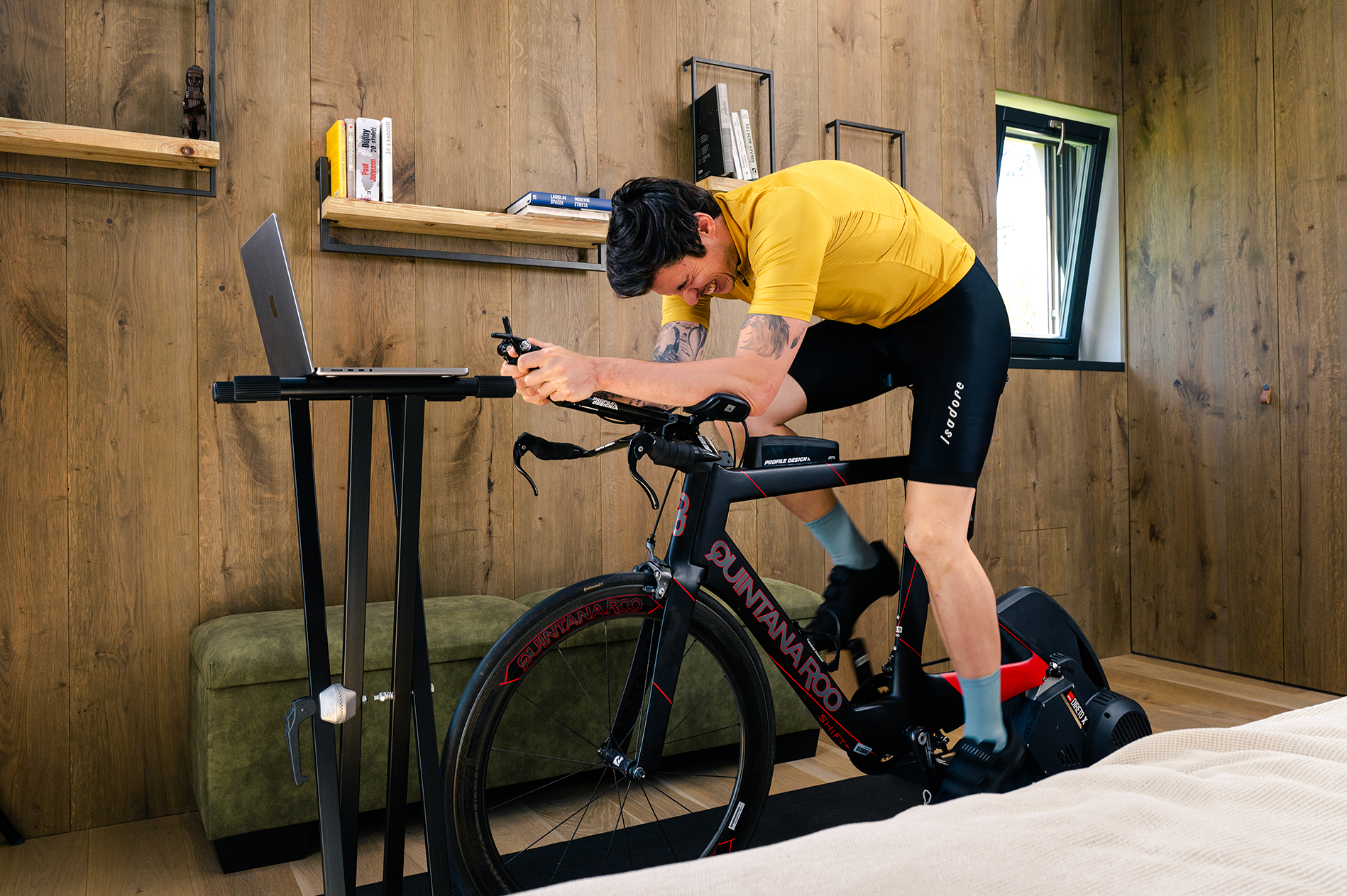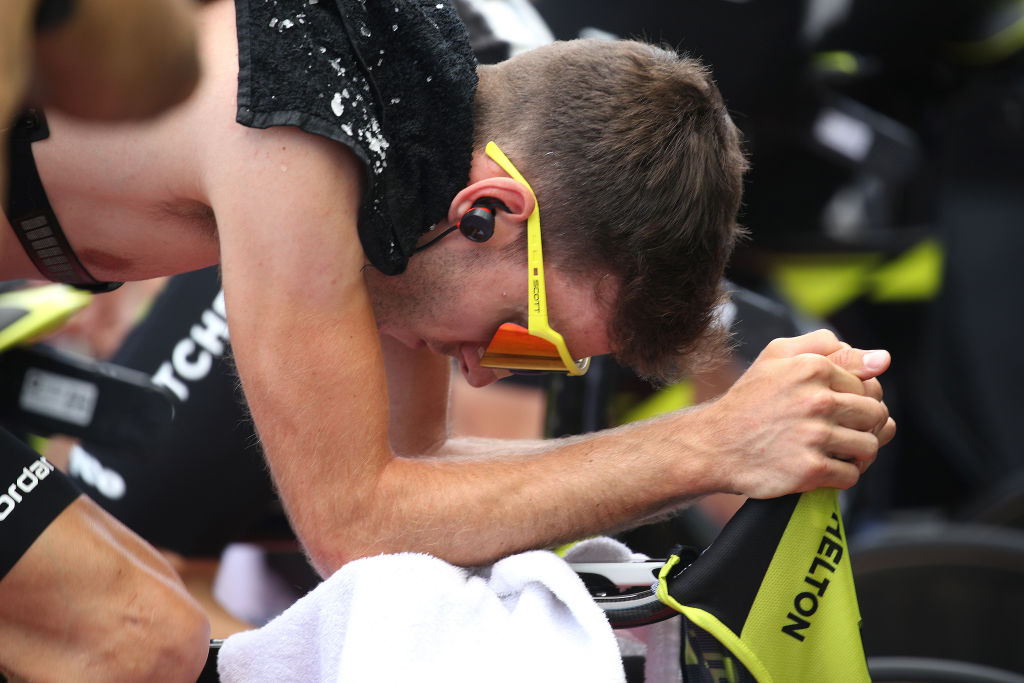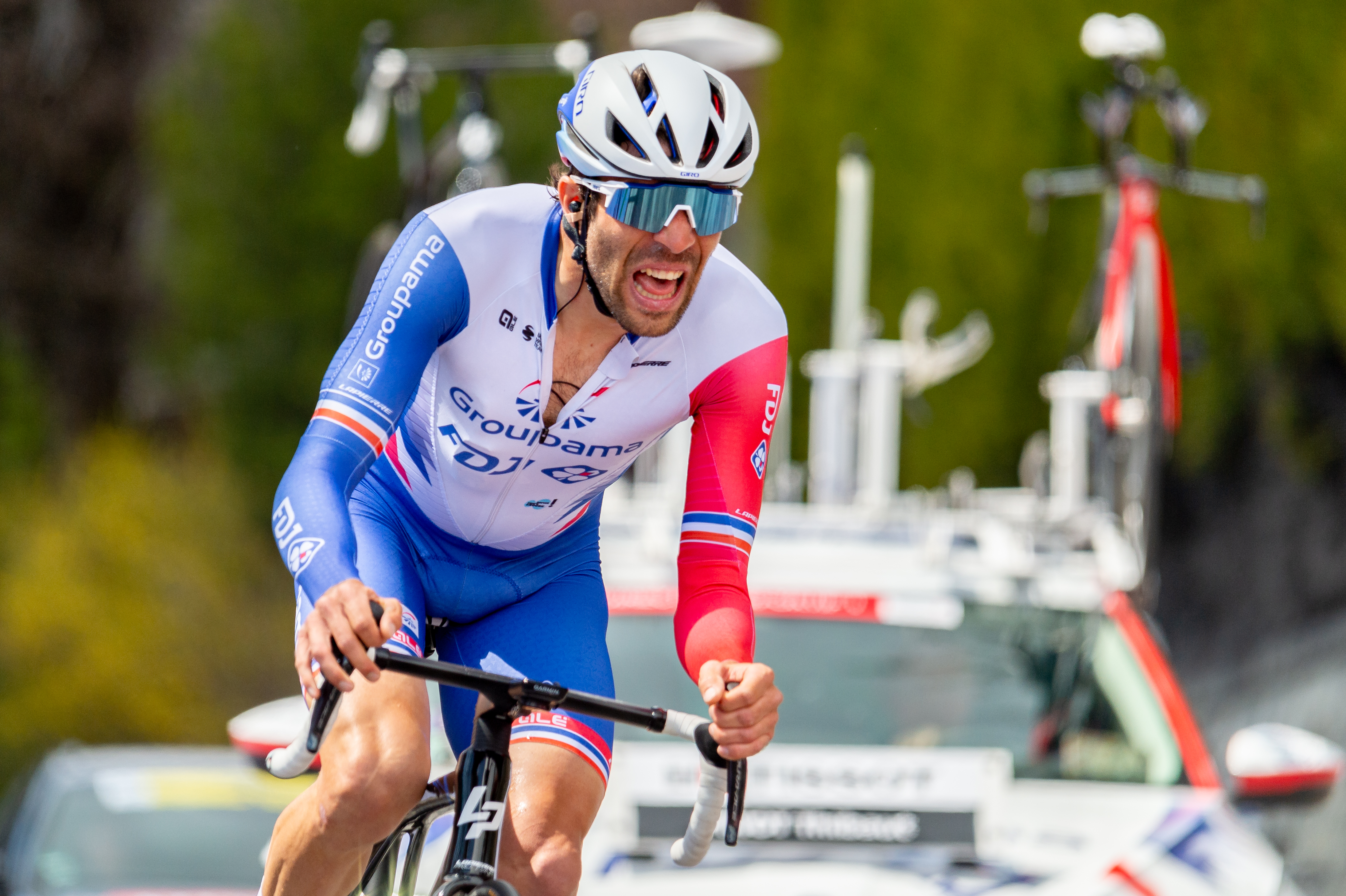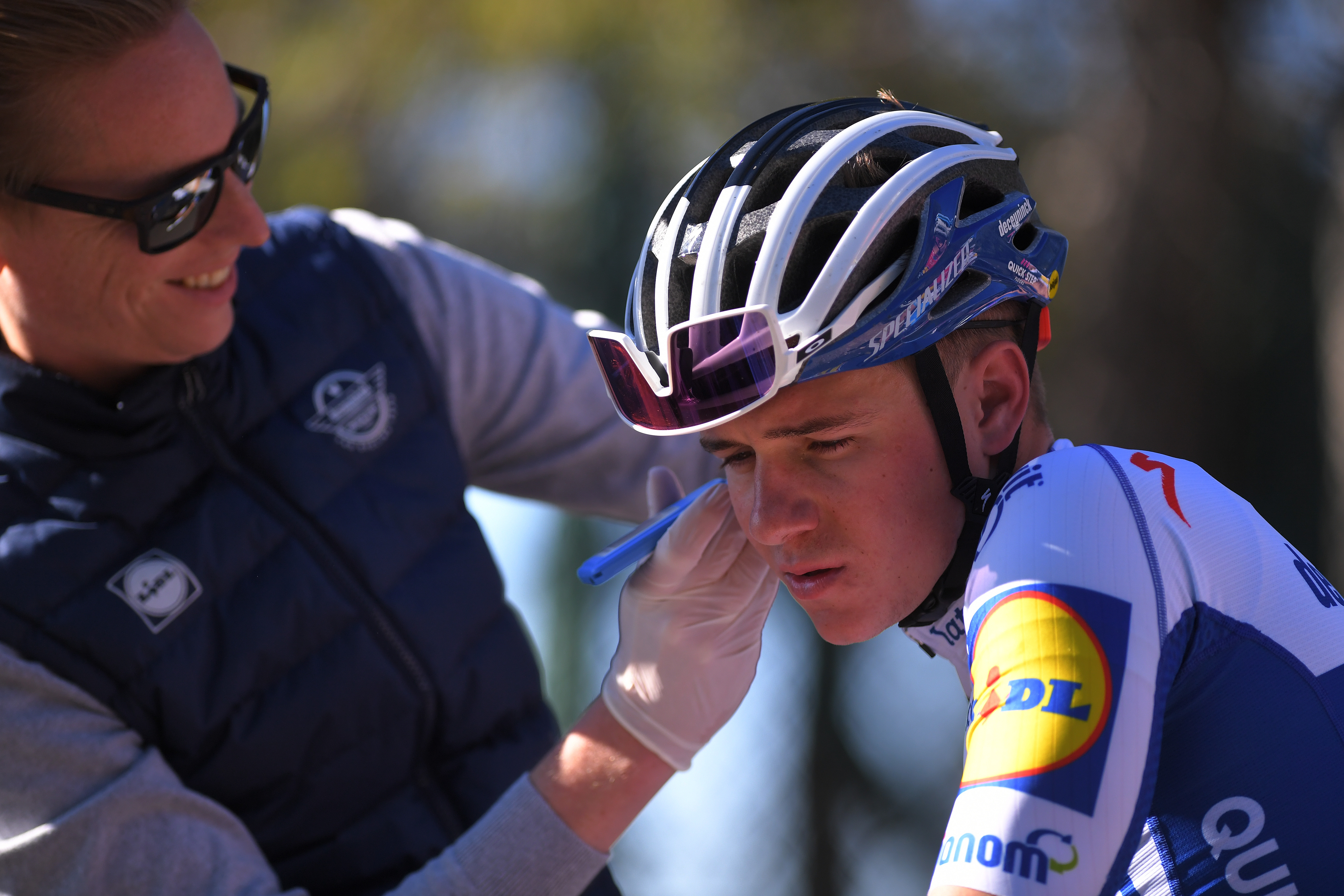What is VO2 Max and how does it affect our performance?
We take a look at what VO2 Max is with the help of a cycling coach

We hear and read a lot about VO2 Max in cycling. It's a term that's been a feature in common cycling parlance for decades. Whether that's in relation to cycling fitness and adaptations in our bodies as a result of training load. Or when hearing about some of the superhuman physiology professional cyclists and athletes generally possess. Talk of an off-the-charts VO2 Max number has regularly featured when discussing the sport's top riders.
But what actually is VO2 Max? If someone asked me to write a short snappy sentence or two explaining VO2 Max and what it is, I'm not sure I could do it. It's not something I actively try to increase during training and I've never had my own VO2 Max measured. I suspect most cyclists, at least apart from those being tested in sports labs or by qualified coaches regularly, will have much of an idea of what their VO2 Max is or how it impacts their riding.
A lot of competitive riders will have access to a power meter, be that in its usual form or via a smart indoor trainer. Of those riders, most will ride to power and focus most of their structured sessions around the power numbers displayed on their bike computers. But how many of them pay attention to VO2 Max and what it means for their riding?
Instead of trying to come up with answers myself, I decided to speak to a qualified cycling coach about VO2 Max, what it actually is, and how it affects our cycling.

I spoke to the owner of Custom Cycle Coaching, Dr Tom Kirk who has a PhD in sports physiology and Nutrition. Kirk was happy to give me some answers and share some of his expert knowledge. Straight off the bat, I wanted to get an answer from the horse's mouth on how VO2 Max can be defined.
"VO2 Max is the maximum amount of oxygen the body can consume during maximal exercise and is measured in litres per minute (L/Min) or, is more commonly expressed relative to body mass as ml/kg/min," he said.
I now had my snappy, short sentence. VO2 Max is the maximum amount of oxygen the body can consume during maximal exercise. Kirk also expanded on some of the factors that determine VO2 Max and why it may vary from athlete to athlete and in different sports that use more or indeed different muscles than cycling.
The latest race content, interviews, features, reviews and expert buying guides, direct to your inbox!
"One of the main factors that influences VO2 Max is the amount of muscle using oxygen. This is why larger athletes (of the same 'fitness'), men compared to women or sports that use more muscle mass generally record a higher VO2 Max. When recorded relative to body mass, a sport such as cross-country skiing, which uses both the upper and lower body, will record higher numbers than measured on the bike, where the legs are the main muscles used."

I think it's fair to say VO2 Max testing is possibly outside of the realms of what's possible for regular cyclists and competitors unless we book some time in a local sports lab or university sports centre, given specialist equipment is required to measure the volume of oxygen being inhaled and exhaled.
Since the amount of oxygen we can physically process lies at the heart of our athletic ability and performance capabilities, I wondered if riders should try to train their VO2 Max specifically.
"While VO2 Max is an important indicator of performance or potential performance, lactate threshold is a better indicator of cycling performance," Kirk explained.
"This determines the proportion of an athlete's VO2 Max they can sustain for a prolonged period. Whether an athlete should focus their training on developing their VO2 max or other aspects of their performance depends on their individual strengths and weaknesses, and how important these are for their goal event."
VO2 Max is clearly not the sole or absolute performance indicator for cyclists. The ability to process and utilise a large amount of oxygen per minute is one thing, but if our lactate threshold does not enable us to capitalise on this advantage, an athlete with a lower VO2 Max but better lactate threshold could measure up just as well. That's before we take into account aerodynamics, willingness to push ourselves, and body weight too.

I also wanted to find out about potential training sessions or work that could be done to improve a VO2 Max score and as a result, the amount of oxygen we can process per minute, thus boosting our own performance. Of course, without regular access to specialist equipment, I expected this would be difficult, but Kirk says there's a metric that can be used to help inform your result at home.
"In order to train your VO2 Max accurately, you first need to measure this (or more realistically the power output corresponding to VO2 Max) in a lab. However, your best power over a five-minute effort is a good ballpark figure," Kirk said.
This makes sense and could well be the reason lots of coaches and training plans look to see what a rider's maximum five-minute power is to inform training sessions and coaching plans.
"By definition, training at this power output is exhausting so a good training session would aim to spend a lot of time at or around that VO2 Max intensity either in shorter bursts with limited recoveries or by using longer intervals at 90-95% of VO2 Max."
Therefore, sessions at or around our best five-minute power performance mark will get us in the general ballpark for working at VO2 Max and improving it over time. It's probably fair to say this is the type of work plenty of cyclists are doing already, and popular indoor cycling apps often can supply and provide training plans featuring these kinds of efforts.

Finally, out of sheer curiosity, I also wanted to know what was the highest VO2 Max Kirk has seen during his career. He didn't cite a grand tour-winning, freakishly high number but explained that VO2 Max tends to be relative to the size of the athlete, as well as weight.
"Larger athletes tend to have a higher absolute VO2 Max, the highest I have seen was when I was testing elite, heavyweight rowers at around 6.5 L/min. However, as these are large athletes, this would 'only' equate to around 65ml/kg/min. When expressed relative to body weight I have measured cyclists at at least 78 ml/kg/min." he said.
This shows that cyclists still probably rank pretty well on the VO2 Max scoring tables overall given the generally high levels of fitness and cardiovascular ability as well as the relatively low overall body weights elite cyclists often have.
For reference, the highest reported VO2 Max recorded was Norwegian cyclist, Oskar Svendsen with a score of 97.5 (Top End Sports).
I now have a better understanding of VO2 Max and how it fits into overall cycling performance and our physiologies. Day to day I don't think I'm going to lose much sleep over not knowing my own VO2 Max value, but it's both useful and interesting to know the kind of effort we need to make to ride at or around our VO2 Max level.
Head to Rouvy for more on Vo2 Max.

Tom joined the Cyclingnews team in late 2022 as a tech writer. Despite having a degree in English Literature he has spent his entire working life in the cycling industry in one form or another. He has over 10 years of experience as a qualified mechanic, with the last five years before joining Cyclingnews being spent running an independent workshop. This means he is just as happy tinkering away in the garage as he is out on the road bike, and he isn’t afraid to pull a bike apart or get hands-on with it when testing to really see what it’s made of.
He has ridden and raced bikes from an early age up to a national level on the road and track, and has ridden and competed in most disciplines. He has a keen eye for pro-team tech and enjoys spotting new or interesting components in the wild. During his time at Cyclingnews, Tom has already interviewed some of the sport's biggest names including Mathieu van der Poel, Tadej Pogačar and Alberto Contador. He's also covered various launches from brands such as Pinarello, Ridley, Specialized and more, tackled the Roubaix Challenge sportive aboard his own rim-brake Cannondale SuperSix Evo, tested over 20 aero helmets in the wind tunnel, and has created helpful in-depth buying advice relating to countless categories from torque wrenches to winter clothing.
